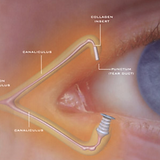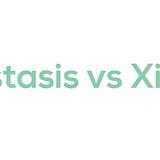State of the Art Dry Eye Services
Dry eye is a condition in which a person doesn't have enough quality tears to lubricate and nourish the eye. Tears are necessary for maintaining the health of the front surface of the eye and for providing clear vision. Dry eye is a common and often chronic problem, particularly in older adults.
With each blink of the eyelids, tears spread across the front surface of the eye, known as the cornea. Tears provide lubrication, reduce the risk of eye infection, wash away foreign matter in the eye and keep the surface of the eyes smooth and clear. Excess tears in the eyes flow into small drainage ducts in the inner corners of the eyelids, which drain into the back of the nose. Dry eyes can occur when tear production and drainage is not in balance.

Option 1:Adding Tears
Mild cases of dry eyes can often be managed using over-the-counter artificial tear solutions. These can be used as often as needed to supplement natural tear production. Preservative-free artificial tear solutions are recommended because they contain fewer additives, which can further irritate the eyes.
People with dry eyes that don't respond to artificial tears alone will need to take additional steps to treat their dry eyes.
Option 2: Conserving Tears
Keeping natural tears in the eyes longer can reduce the symptoms of dry eyes. This can be done by blocking the tear ducts through which the tears normally drain. The tear ducts can be blocked with tiny silicone or gel-like plugs that can be removed, if needed. Or a surgical procedure can permanently close the tear ducts. In either case, the goal is to keep the available tears in the eye longer to reduce problems related to dry eyes.
*Best Option and not painful Punctual Plugs*
Option 6: Speciality Contact Lens
Many patients have heard statements in the past that because you have dry eye you are unable to wear contact lenses the reality is this statement is completely incorrect. In-fact if a patient is fit in the correct contact lens for that specific patient, the contact lens can help to protect the eye and treat dry eye problems.





